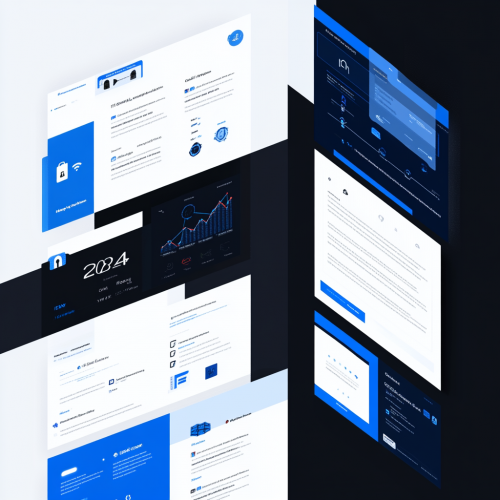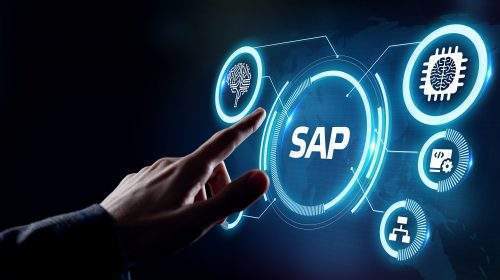The term “GPU” was first introduced by Nvidia in 1999 when it released the GeForce 256. GPUs were originally created for rendering images in computer graphics, but over time they have been used for machine learning, AI, HCI, and scientific research.
In this article, we’ll look at what a GPU is, how GPUs differ from graphics cards, what industries use them and for what tasks.
What is a GPU
Graphics processing units (GPUs) are microprocessors that manage the memory of graphics cards and speed up the display of images on the device’s screen. They have many cores that can perform tasks simultaneously and thereby speed up many computing processes.
GPU and graphics card: what is the difference
GPUs and graphics cards are often confused with each other, but in fact they are different devices. A graphics card is a device that houses the GPU, VRAM, power supply, communication line with the CPU, and video outputs.
Graphics processor is a component of a graphics card that is necessary for graphics processing, 3D modeling, processing large amounts of data and complex mathematical calculations.
GPU applications
Graphics and rendering
The animation industry uses GPUs to render detailed and realistic effects and 3D graphics. Pixar and DreamWorks create animated characters and virtual worlds using GPUs. For example, Pixar’s RenderMan is a toolkit that uses the GPU to render high-quality images.
Programs like Adobe Photoshop and Illustrator and AutoCAD use the power of GPUs to improve performance. GPU acceleration enables fast image processing, 3D rendering and image correction, and real-time display of the result. GPU acceleration allows for fast image processing, 3D rendering and image correction, and real-time display of the result.
Part of the functions in Adobe Photoshop GPUs accelerate, such as focus selection, editing areas and blur gallery. But there are some functions that are impossible to run without GPUs. For example, 3D, bird’s eye view, rendering (picture frame and tree), and smooth brush resizing.
Gaming Industry
Games are becoming more realistic every year. Developers create exciting virtual universes and immerse gamers in the gameplay as much as possible. In order for characters to be beautifully rendered, objects were correctly reflected and moved according to the laws of physics, and there were no delays in online play, you need graphics processors. Graphic processors are needed.
In games, you need to determine the colors and positions of each pixel on the screen. To do this, you need to do fast and repeated calculations to maintain high frame rates and create smooth visual effects. The GPU allows you to perform these operations quickly and simultaneously to display 3D graphics in real time.
Graphics processors in games simulate the physical calculations, realistic movements, interactions, and AI calculations that dictate the behavior of non-player characters and objects.
GPUs perform the same operation on multiple data points. Thus allowing the CPU to focus on other game logic, resulting in smoother and more responsive gameplay. GPU performs the same operation on multiple data points.
In streaming, the game runs on the server and the GPU is responsible for rendering the game and encoding the video for its smooth transmission over the Internet. In virtual reality, the demands on the GPU are even higher.
To create a stereoscopic 3D effect, the GPU must simultaneously display two slightly different perspectives of the same scene. This doubles the rendering load, so a high-performance GPU is needed to maintain a high frame rate and prevent motion sickness.
Research and HCI
Scientific fields like bioinformatics, astrophysics, and climatology generate huge amounts of data that need to be processed and analyzed. GPUs with their parallel processing capabilities are well suited for these tasks. They can perform many computations simultaneously so that scientists get research results faster.
To model and simulate complex physical processes from particle interactions in a physics experiment to climate models in meteorology, complex mathematical equations need to be solved for thousands or even millions of data points. GPUs can perform calculations for each data point simultaneously, reducing the time needed for simulations.
Artificial intelligence and machine learning
To train neural networks to recognize patterns and make predictions, it is necessary for the network to tune its internal parameters based on input data. This task involves a large number of mathematical operations that GPUs can easily handle.
To train machine learning models efficiently, large amounts of data and computational resources are often required. Distributed computing involves splitting the training process across multiple GPUs, allowing the model to process more data in less time. This approach, combined with the parallel processing capabilities of GPUs, can significantly accelerate the training of machine learning models.
GPUs are also used in specific applications within AI and OD, such as image and natural language processing. In image processing, GPUs can quickly process and analyze visual data, making them useful for tasks such as image recognition and classification. In natural language processing, GPUs can help with tasks such as speech recognition and language translation..
Industry and Manufacturing
Graphic processors are used to model and optimize production and logistics chains. This is done by creating a digital twin of the production process that can be used to test scenarios and determine the most efficient and cost-effective approach. For example, NVIDIA’s Metropolis for Factories offers a suite of AI-based automation workflows.
Fast processing and analysis of big data helps businesses make quick decisions and optimize business processes to increase efficiency and reduce costs. GPUs are also used to visualize 3D models and projections, which are critical during the design and prototyping phase in manufacturing.
Finance and Cryptocurrency
In the financial sector, GPUs are used to analyze and predict financial data using complex models and algorithms. This involves processing large amounts of data to identify trends and patterns that can help in making informed financial decisions.
Industries from NVIDIA, including deep learning, machine learning and natural language processing (NLP), are being used by organizations to enhance risk management, improve data-driven decisions and security, and enhance the customer experience.
Graphic processing units also help process transactions and control computations to ensure the security and efficiency of financial transactions. In the world of cryptocurrencies, GPUs are used for mining, which involves performing complex computational tasks to validate transactions and add them to the blockchain.
Medicine and biotechnology
Graphic processors are used to process and analyze medical images, including CT and MRI scans. In this way, doctors can identify abnormalities and patterns to diagnose diseases and make treatment plans. In drug discovery and therapeutic development, GPUs help model and simulate biological systems and reactions.
GPUs help compare DNA sequences, identify patterns, and make predictions about diseases and their treatments. With GPUs, researchers can process genomic data faster and with higher accuracy. Accelerating genome analysis in population and cancer genomic studies can help identify rare diseases and bring customized therapies to market faster.
Cloud computing and virtualization
As businesses migrate to the cloud, graphics processing units (GPUs) are becoming an important part of the virtual infrastructure. Service providers are providing companies with GPU servers on the public cloud.
For example, ITGLOBAL.COMprovides its customers with cloud servers with NVIDIA A800 GPUsbased on a 2-socket vStack-R server and disk subsystem on NetApp Hi-End storage. This gives users access to powerful computing resources without the need for upfront hardware investments.
More importantly, virtualization technologies provide GPU support, allowing multiple virtual machines (VMs) to share a single GPU or a single VM to share multiple GPUs. This advancement improves the efficiency and scalability of GPU-accelerated cloud services.
Cloud GPU services have been heavily influenced by the NVIDIA Tesla series, especially the NVIDIA Tesla V100. Designed for high-performance computing, these GPUs are widely used in data centers around the world. They deliver high computational power, making them suitable for demanding applications such as machine learning and scientific computing.
GPUs are a catalyst for innovation
GPU from a processor for rendering graphics has gradually become a powerful tool that has contributed to the development of various industries, from accelerating scientific discoveries and optimizing industrial processes to improving gaming and enabling cloud services.
Thanks to its parallel processing capabilities, GPUs are now being used for high-performance computing, artificial intelligence, machine learning and data analysis.
Scientists predict that in the future, demand for high-performance computing will increase, systems with multiple GPUs will become more common, and AI-specific cores will be integrated into GPUs. Therefore, the prospects for the technology are vast, as well as the tasks it helps to solve.

 Previous article
Previous article


